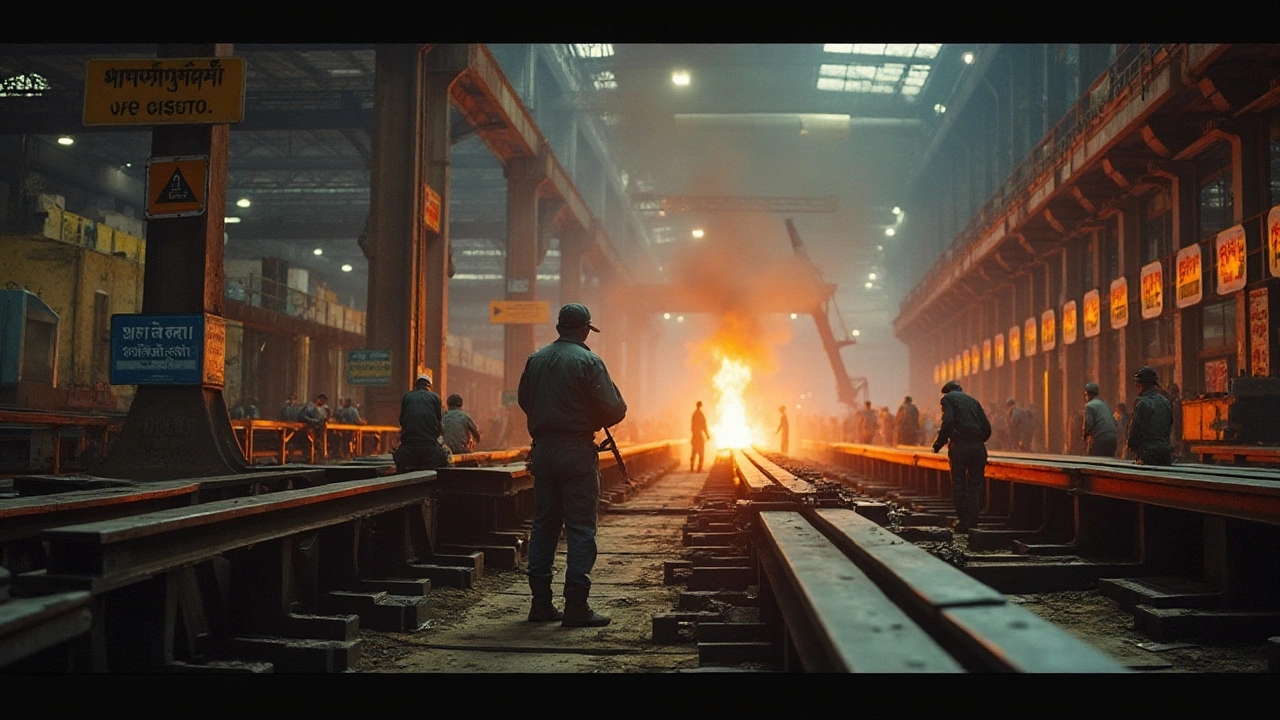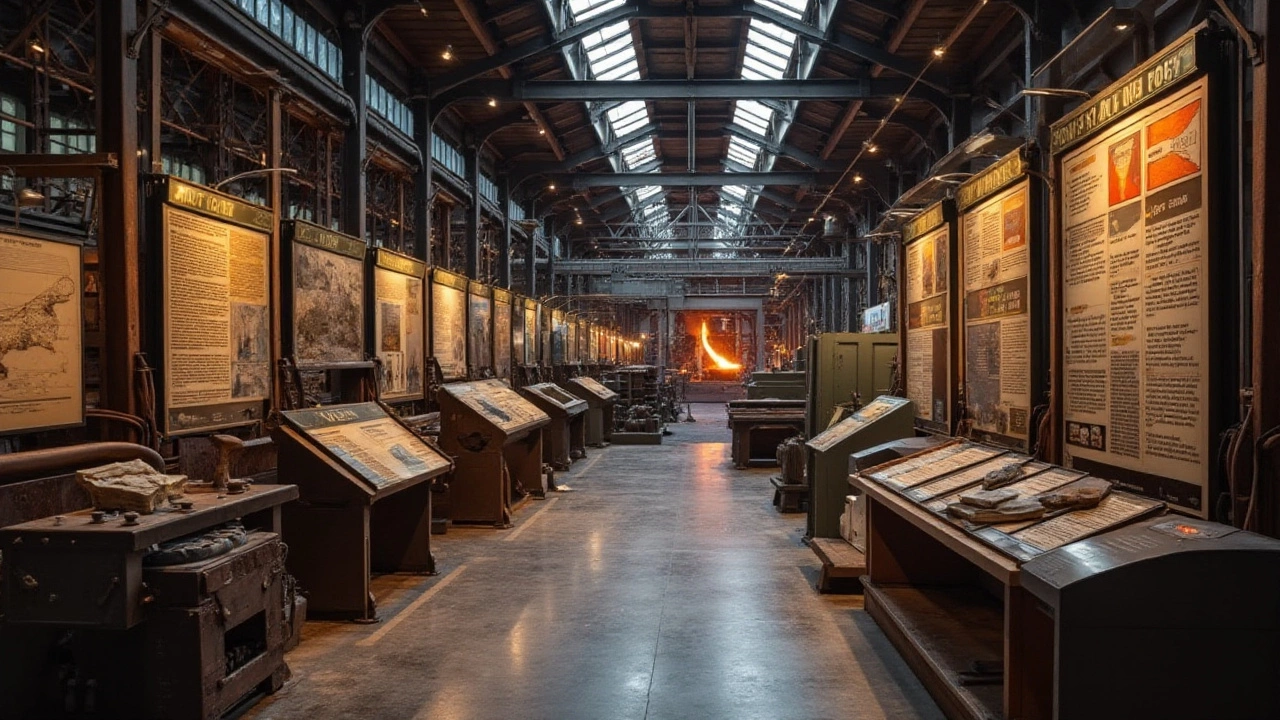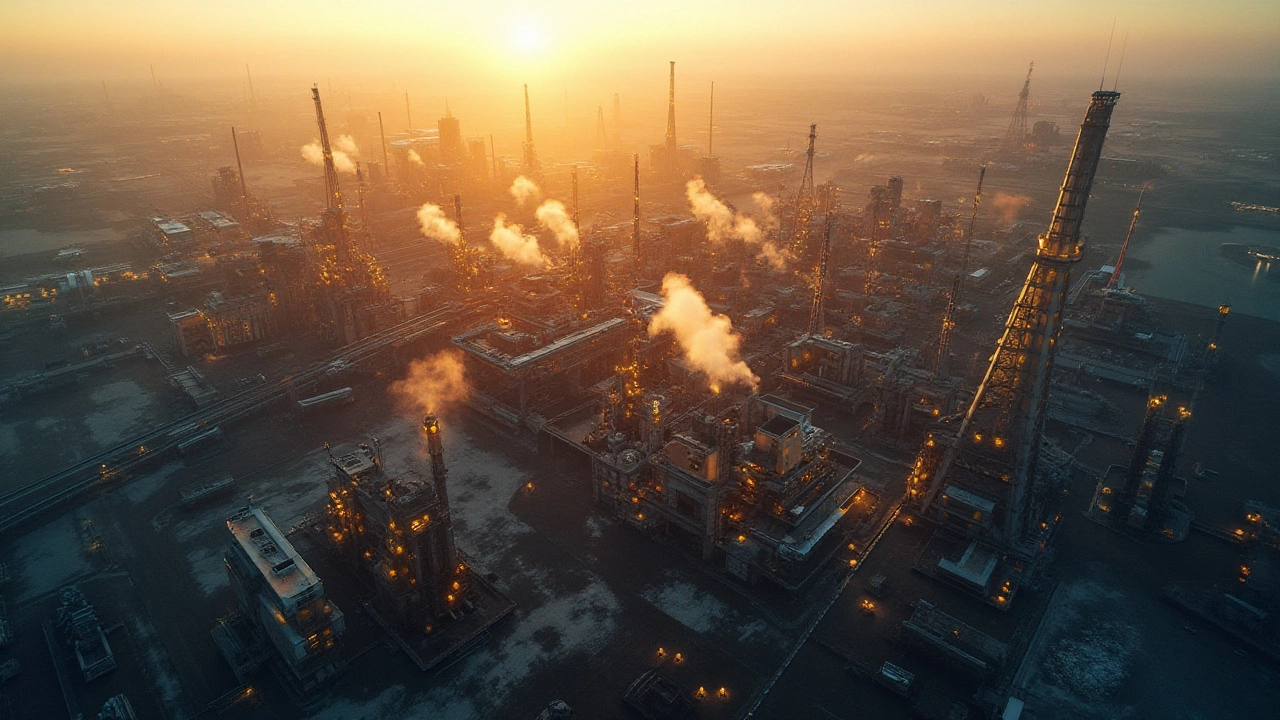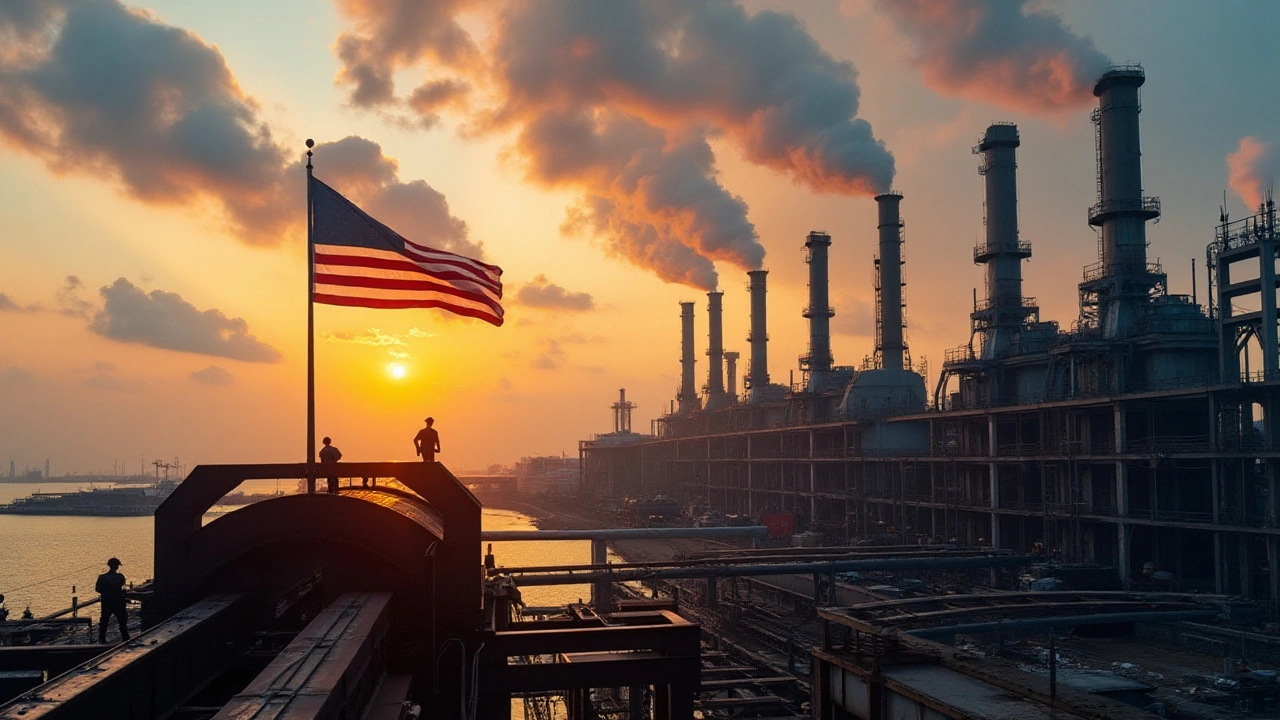The steel industry holds an enduring place in the American industrial landscape, representing not just a hallmark of past achievements but an ongoing force in the economy. From the vivid industrial history of the Great Lakes region to the state-of-the-art facilities located in unexpected parts of the country, each plant carries its own story intertwined with the steel it produces.
In this exploration of where steel is made in the US, we take a journey through time and geography, uncovering how these locations have evolved and retained their importance. With transformations driven by technology and the ever-shifting demands of the global market, these manufacturing spots are not just about producing steel but also about sustaining communities and innovation. Let’s dive deeper into the heart of steel production in America.
- Historical Steel Manufacturing Hubs
- Modern Steel Production Areas
- Notable Steel Plants and Practices
- Economic Impact of Steel Production
Historical Steel Manufacturing Hubs
The story of steel manufacturing in the United States is a riveting tale of industrial might and resilience. Historically, the heart of America's steel production was centered around the Great Lakes region, with Pittsburgh earning the title of the 'Steel City.' This area, rich in coal and iron ore, provided the essential raw materials needed for steel production. Established in the late 19th century, these hubs capitalized on the proximity to waterways for easy transportation, making it a logistical dream. Steel from this region played a pivotal role in the massive structural expansions witnessed across the country, from skyscrapers to bridges.
Pittsburgh's rise as a manufacturing powerhouse was not just due to its resources; it was fueled by entrepreneurs like Andrew Carnegie, who turned steel into the backbone of America's economic growth. By the early 20th century, Pennsylvania alone produced significant quantities of steel, contributing over 50% to the national output. Such dominance was a testament to not just the geology of the region but also the ingenious innovations in blast furnace technology that marked the era. "The steel industry shaped the destiny of the region," noted historian David Lewis during a discussion on industrial evolution.
Another remarkable hub was Chicago, which due to its strategic positioning, became the center for processing and redistributing steel. Its close ties to the railroads allowed it to channel raw materials efficiently, giving rise to an extensive network of manufacturing locations. Known for its labor movements and robust steel mills like the South Works, Chicago’s contributions were more nuanced, blending raw output with a focus on labor skills that set new standards in manufacturing practices. At its peak, the South Works employed tens of thousands, their sweat and skill casting the foundations of a city aspiring to reach the sky.
Not to forget, the Southern states like Alabama also made notable strides in steel production, significantly affecting local economies. The Birmingham District, often called the Pittsburgh of the South, leveraged both its coal and iron ore reserves. The establishment of the Tennessee Coal, Iron and Railroad Company (TCI) further solidified the area’s reputation in steel fabrication. Their robust networks injected dynamism into a region otherwise reliant on agriculture and textiles, manifesting steel's transformative power. This interplay of geographical and economic factors redefined the Southern industrial landscape, a change that remains impactful to this day.

Modern Steel Production Areas
Today, the landscape of steel manufacturing in the United States has expanded beyond its traditional heartlands to encompass new regions that boast advanced technology and innovation. These manufacturing locations are strategically placed to harness regional resources, skilled workforces, and proximity to key markets. The Southern states, particularly areas like Alabama and Mississippi, have become thriving hubs for steel production due to their access to raw materials and logistical networks. The establishment of modern mini-mills, which utilize electric arc furnace technology, allows these regions to produce steel more efficiently with less environmental impact.
The Great Lakes remain significant, bolstered by their deep-rooted steel-making heritage. Facilities in Indiana and Ohio are pivotal in this industry with plants continuously adapting to sustainable practices. Many of these sites have undergone extensive modernization to stay competitive globally. For example, technology-driven improvements have been implemented to increase output and minimize waste. As the demand for greener technologies grows, these plants lead the way, investing in renewable energy to power their operations. A plant in Indiana, for instance, is at the forefront, committing to reducing carbon emissions by 30% within the next decade. This movement towards eco-friendly processes is reshaping the industry's identity.
Innovative Approaches and Industry Leaders
The dynamic steel sector in the US is characterized by innovation. Companies like Nucor and U.S. Steel play pivotal roles here, implementing cutting-edge methodologies to elevate production capabilities. Nucor, renowned for its nimbleness and efficiency, has invested significantly in technology that optimizes yield and reduces costs. By embedding smart systems and data analytics, they achieve remarkable transparency and control over their operations, something their global competitors look to emulate. Similarly, U.S. Steel, committed to integrating state-of-the-art infrastructure, is pushing boundaries with advanced materials like dual-phase steels that enhance products while conserving resources.Solidifying the country's stance as a leader in steel production, policy support and investments in infrastructure play a crucial role. The government's strategic alliances have paved the way for projects that are resilient to economic shifts, providing stability to local economies these plants support. As such, these sites do not only produce steel but encompass facilities that cast a wide net of economic benefit in adjacent industries—from construction to energy sectors.
The American Iron and Steel Institute rightly states, "Innovation is the heartbeat of our industry's future. With sustainability and progress at its core, our steel plants mold modern America."
Through marrying tradition with innovation, these steel manufacturing areas continue to thrive, cementing America’s place in the global industrial scene. By emphasizing both efficiency and environmental stewardship, modern steel production areas showcase how industries evolve without losing sight of their roots.

Notable Steel Plants and Practices
When it comes to steel manufacturing in the United States, a few standout locations have carved out reputations not just for their output but also for their innovative practices. Among the top are the Great Lakes region with its long history, and the South which is emerging as a modern rival. These regions represent the old guard and the new frontier of steel production, bringing unique techniques and a steadfast commitment to quality.
The Great Lakes region, particularly cities like Gary in Indiana, has long been a powerhouse in American steel production. The presence of major bodies of water provides an advantageous strategic edge not just for the shipping of raw materials but also the distribution of finished products. Among the most iconic is the U.S. Steel Gary Works, once the largest mill in the world. Founded in 1906, this plant spans thousands of acres and continues to be a key player in the industry even after more than a century. It combines old-world steel-making techniques with cutting-edge technologies to maintain its competitive edge.
Heading southward, the steel industry has seen significant growth, with states like Alabama and Mississippi making their mark on the map. The Nucor Steel plant in Memphis is a prime example, boasting state-of-the-art facilities that emphasize sustainability and efficiency. This plant heavily focuses on recycling scrap metal, thus reducing environmental impact and promoting a circular economy. This modern approach is not just beneficial for the company but also for the broader industry which is becoming more environmentally conscious. And let’s not overlook the importance of these plants in powering up the local economies by providing steady jobs and supporting ancillary industries.
Amidst this landscape, it's fascinating to see how practices have evolved to include more than just the traditional blast furnaces. Today, efforts lean towards electric arc furnaces, which are less energy-intensive, more economically viable, and align well with green initiatives. In fact, according to a recent industry survey, over 70% of the steel produced in the US now comes from these electric arc furnaces, highlighting a shift in practices that aligns well with contemporary environmental standards.
The world of steel also brims with stories of survival and resilience. As an industry executive once said, “Steel is not just a business; it’s a way of life for generations.”
Reflecting on Gary Works, it’s not just steel production; it’s the blood, sweat, and dreams of countless workers who’ve crossed those gates.This spirit resonates across plants and workers, creating a community that is as tough as the metal itself.
Along with the production processes, these steel production facilities are deeply involved in research to enhance the fabricating materials, thus serving the needs of various sectors from construction to automotive. This ongoing quest for improvement keeps the US steel industry on the cutting edge, ensuring that it remains a dominant force on the global stage. Even with challenges posed by international competition, these notable plants and the practices they employ reflect an industry that is determined to adapt and thrive, maintaining the spirit of steel as an intrinsic part of the American industrial identity.

Economic Impact of Steel Production
The steel manufacturing industry serves as the backbone for numerous sectors and holds a monumental influence over the economic stature of the United States. From the job market to infrastructure development, the rippling effects of steel production reach far and wide, reflecting in the national GDP. As of recent evaluations, the industry supports over one million jobs across various verticals including raw material extraction, logistics, and manufacturing itself. This industry forms a significant employment pillar, ensuring stability for families and communities centered around steel plants. Moreover, it isn’t just about direct employment; secondary job markets in areas such as catering, retail, and education thrive in steel-centric regions, feeding into a broader economic mechanism.
Another pivotal aspect that's rarely discussed but deeply influential, is the investment in technology and innovation driven by the industry. As steel production practices evolve, there is a surge in research and innovation jobs, as well as funding for higher education institutions that collaborate closely with these plants. This symbiotic relationship fosters creativity and ensures the US remains competitive in both quality and production cost in the global market. Intriguingly, the steel industry is also moving towards greener practices, which directly influence policy-making and investments in renewable energies. This transition not only aligns with environmental goals but also fuels new job opportunities and a re-skilling movement among the workforce.
The American Iron and Steel Institute notes, "Steel is not only an economic pillar but also a material that defines our modern world, offering endless possibilities for growth and innovation."
Analyzing the financial health of regions dependent on steel production unveils a stark contrast in areas where such industries are in decline. Cities that once thrived during steel's golden age have witnessed economic downturns, underlining the necessity of this industry for financial buoyancy. Steel manufacturing harbors the strength to be a stabilizing force, propelling other industries like automotive, construction, and technology. Given its central role in major sectors, any shifts in steel production rates or policies have a cascading effect, impacting everything from consumer prices to international trade balance.
Specifically, the steel industry’s contributions to infrastructure is paramount. The impact is evident in the development of roads, bridges, and buildings, which offer long-term benefits for state and national economies by promoting trade and connectivity. Steel is pivotal in expanding transportation networks, which, in turn, lowers logistical costs and opens new regional markets. This cyclical growth not only strengthens local economies but enhances the nation's global trading standing. It's noteworthy that with modern environmental regulations, the industry has invested heavily in energy-efficient and pollution-curbing technologies, demonstrating a commitment to sustainable growth and further solidifying its role in a contemporary, eco-conscious economy.
